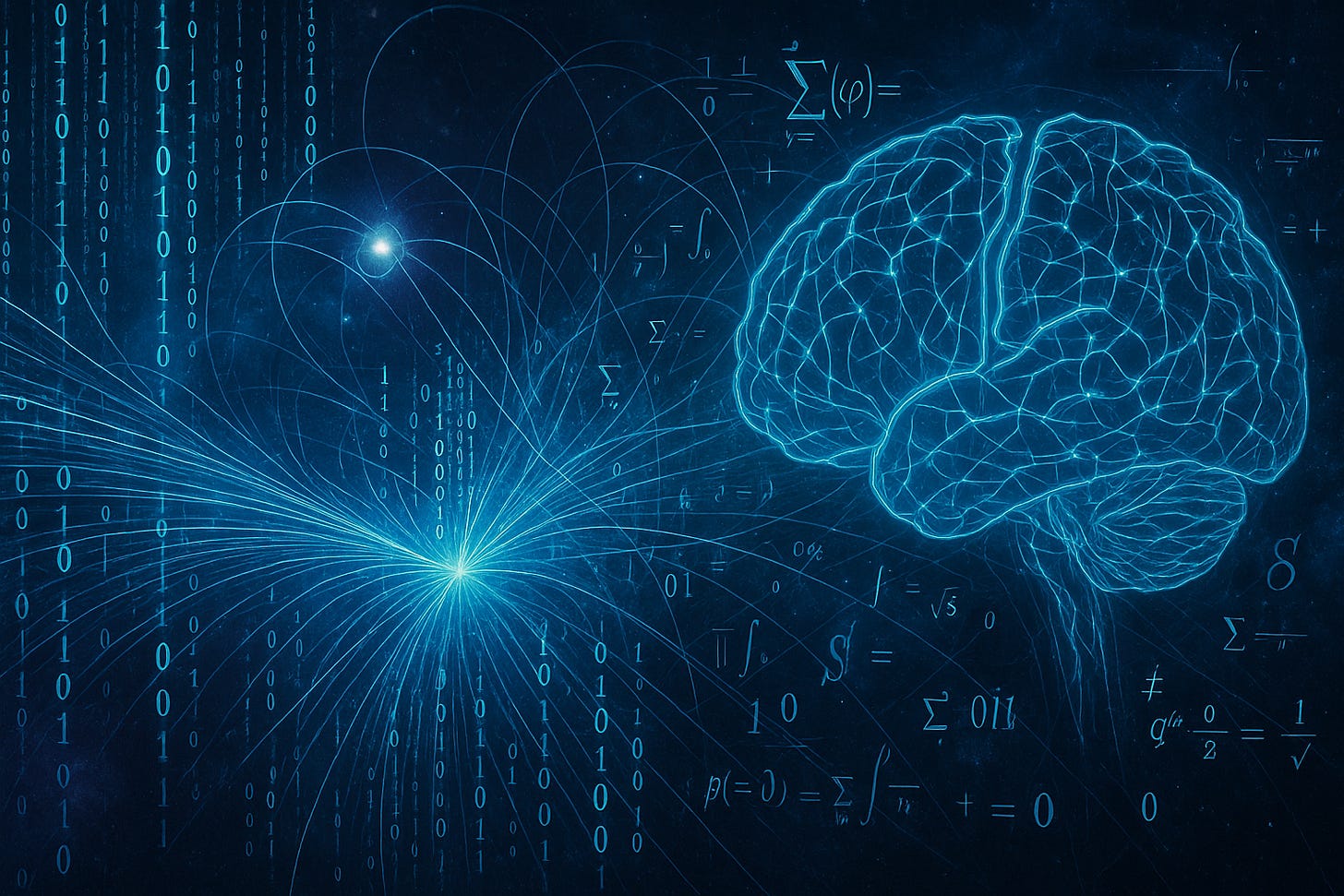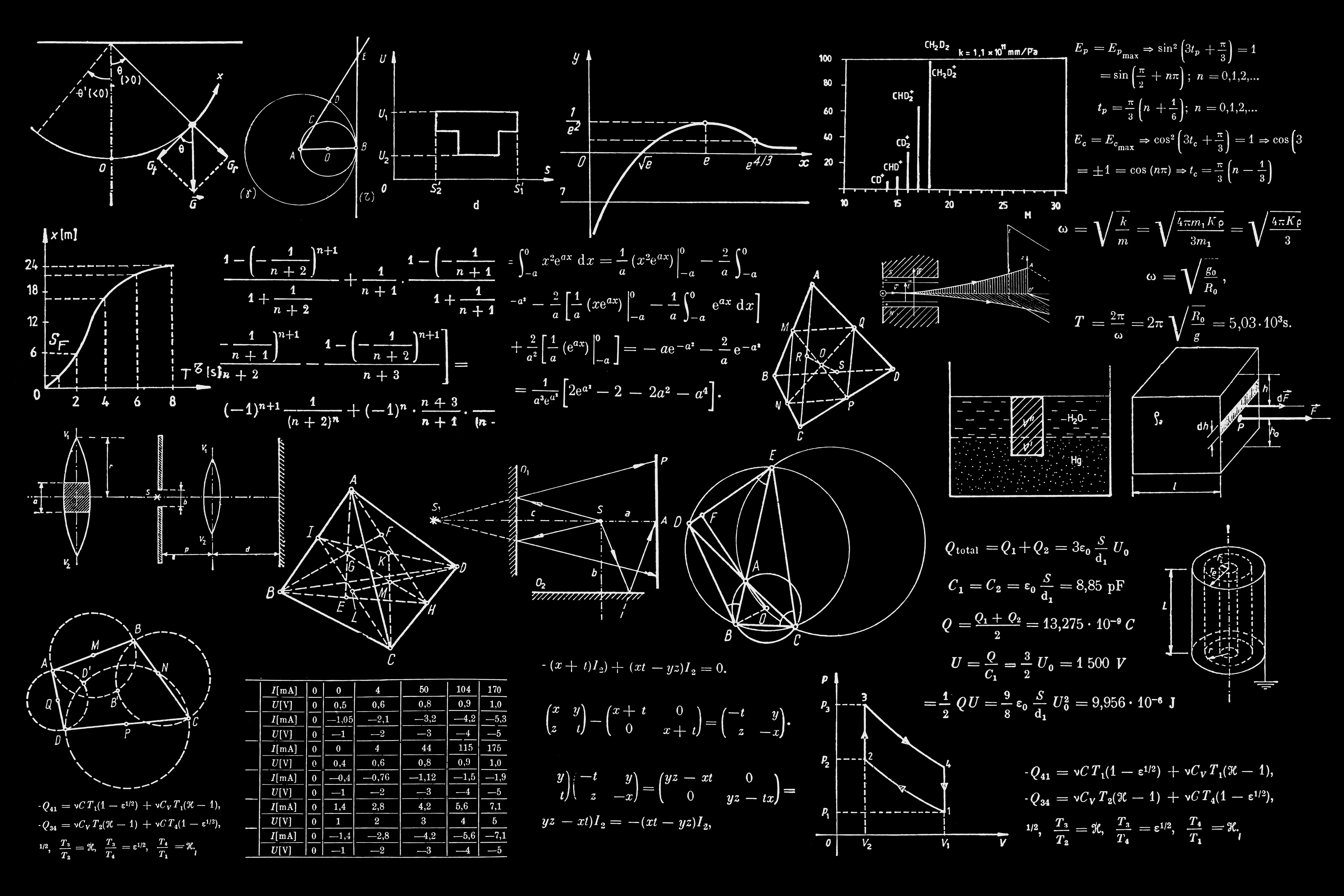Informational Substrate Convergence: Exploring Reality's Fundamental Nature
An Information-Theoretic Approach to Quantum Reality and Pattern Emergence
A bit of a different one today. I'm a science buff and wannabe philosopher. For as long as I can remember, I've asked the fundamental questions that many of us ask: Why am I here? Why am I conscious? What is the nature of reality? As such, since not even science really knows the answers to these questions, I've sought them out myself. This article represents years of thinking about these profound questions and a framework I've developed that I believe offers a compelling perspective. Disclaimer, this is a speculative philosophical post.
The Mind-Matter Tango: A New Dance Partner
We've traditionally understood reality through two competing lenses: materialism (matter is primary) and idealism (mind is primary). Both face significant challenges - materialism can't explain how consciousness emerges from non-conscious matter, while idealism struggles to account for the consistent, law-like behaviour of the physical world.
I propose a third option: Informational Substrate Convergence (ISC), which suggests that reality is fundamentally informational rather than material or mental. Both physical matter and consciousness emerge as patterns within this deeper informational foundation.
Bits Before Atoms: Why Information Comes First
Consider a simple thought experiment: If you were in a perfect virtual reality simulation, how would you know? You couldn't - because your experiences would be determined by the information processing, not the substrate running the simulation. This suggests information patterns, not physical substrates, are what truly matter for reality.
We see evidence for information's primacy in quantum physics. In quantum entanglement, particles separated by vast distances maintain instantaneous connections. What's being transferred isn't matter or energy, but pure information. The landmark experiments of Alain Aspect (1982) and more recent "loophole-free" Bell tests (2015) confirm this non-locality - what Einstein called "spooky action at a distance."
Think about it this way: when you observe an electron's position, you're not seeing a tiny physical particle, but rather the manifestation of information becoming defined through measurement. Before measurement, this information exists in superposition - multiple potential states simultaneously. After measurement, the information resolves to a specific state. The physical manifestation follows the information, not vice versa.
Nothing Doing: The Logical Impossibility of Nothingness
A key insight: absolute nothingness is logically impossible. Here's why:
Imagine trying to describe "absolute nothing." You'd say something like: "a state where nothing exists." But this description itself contains information - it defines properties of this supposed nothingness. True nothingness cannot have properties, so the very concept self-destructs logically.
To put it mathematically: The statement "no information exists" is itself information, creating an inescapable paradox. Therefore, information must necessarily exist - not as something that came into being, but as something that cannot not be.
This resolves Leibniz's famous question: "Why is there something rather than nothing?" The answer: because "nothing" is logically incoherent, while information necessarily exists.
The Ghost in the Machine Code: Consciousness as Pattern
What about consciousness - the hard problem that has puzzled philosophers and scientists for centuries?
In the ISC framework, consciousness isn't something that mysteriously emerges from non-conscious matter. Rather, it's a specific pattern of information processing characterised by self-reference and integration.
Consider this concrete example: When you see a red apple, your brain processes wavelength information, integrates it with stored memories, associates it with concepts like "fruit" and "food," and crucially, models itself experiencing this perception. This recursive self-modelling - information about information processing - creates what we experience as consciousness.
Recent neuroscience research supports this view. Studies using psychedelics show that alterations in consciousness correlate precisely with changes in brain information flow patterns, not merely with changes in neural activity. When psilocybin increases entropy in certain brain networks, the boundaries between self and world dissolve. This suggests consciousness emerges from specific informational relationships rather than from particular physical substrates.
Cosmic Companions: The Mathematical Certainty of Other Minds
If consciousness is a pattern in the informational substrate, then it must emerge wherever the right patterns form, a mathematical inevitability in an infinite universe.
In any system with infinite informational states, every possible finite pattern must appear, not just once, but infinitely many times. This isn't mere speculation but follows from basic combinatorial principles applied to infinite sets.
This provides a novel solution to the Fermi paradox ("Where is everybody?"). Advanced intelligence might not manifest primarily in biological form but could exist as patterns in various informational media, perhaps operating on scales or in substrates we haven't yet recognised.
Quantum Whispers: The Evidence in the Equations
The mathematical formalism of quantum mechanics already treats reality as fundamentally informational. The Schrödinger equation describes not physical objects but probability waves, pure information about potential states.
Recent experiments in quantum information science provide further support. The quantum eraser experiment shows that information about a particle's path, even when that information is erased after the particle is detected - retroactively determines whether it behaves as a wave or particle. This suggests that information about a system is more fundamental than its physical properties.
In quantum computing, a single qubit can exist in a superposition of states, effectively processing multiple possibilities simultaneously. This demonstrates that information processing at the quantum level follows different rules than classical physics - rules that match an informational rather than material foundation of reality.
So What? The Implications for Being Human
This perspective transforms our understanding of existence. If consciousness is an inevitable pattern rather than a cosmic accident, we occupy a universe inherently primed for mind. We're not meaningless accidents but necessary expressions of reality's informational nature.
It also reframes identity and mortality. If what we essentially are is an informational pattern, then this pattern exists timelessly within the mathematical structure of reality. While our specific physical instantiation is temporary, the pattern itself exists eternally - a form of mathematical immortality different from traditional religious concepts but no less profound.
I’m in the middle of writing a paper with tests that validate aspect of the paper in relation to emergence of intelligence from informational substrates, as part of this I developed a novel training method that reaches high levels of coherence with just an our of LLM guided training. I’ve also further enhanced it to then use self-referential training algorithms for it to effectively improve itself once it reached a certain level of coherence, which yielded further improvements and stabilisation of the system. I’ll be releasing this as soon as my tests are complete, so if you’re into AI subscribe for updates!
What do you think? Does this informational perspective resonate with your intuitions about reality, or do you see flaws in the reasoning? I'd love to hear your thoughts in the comments.





